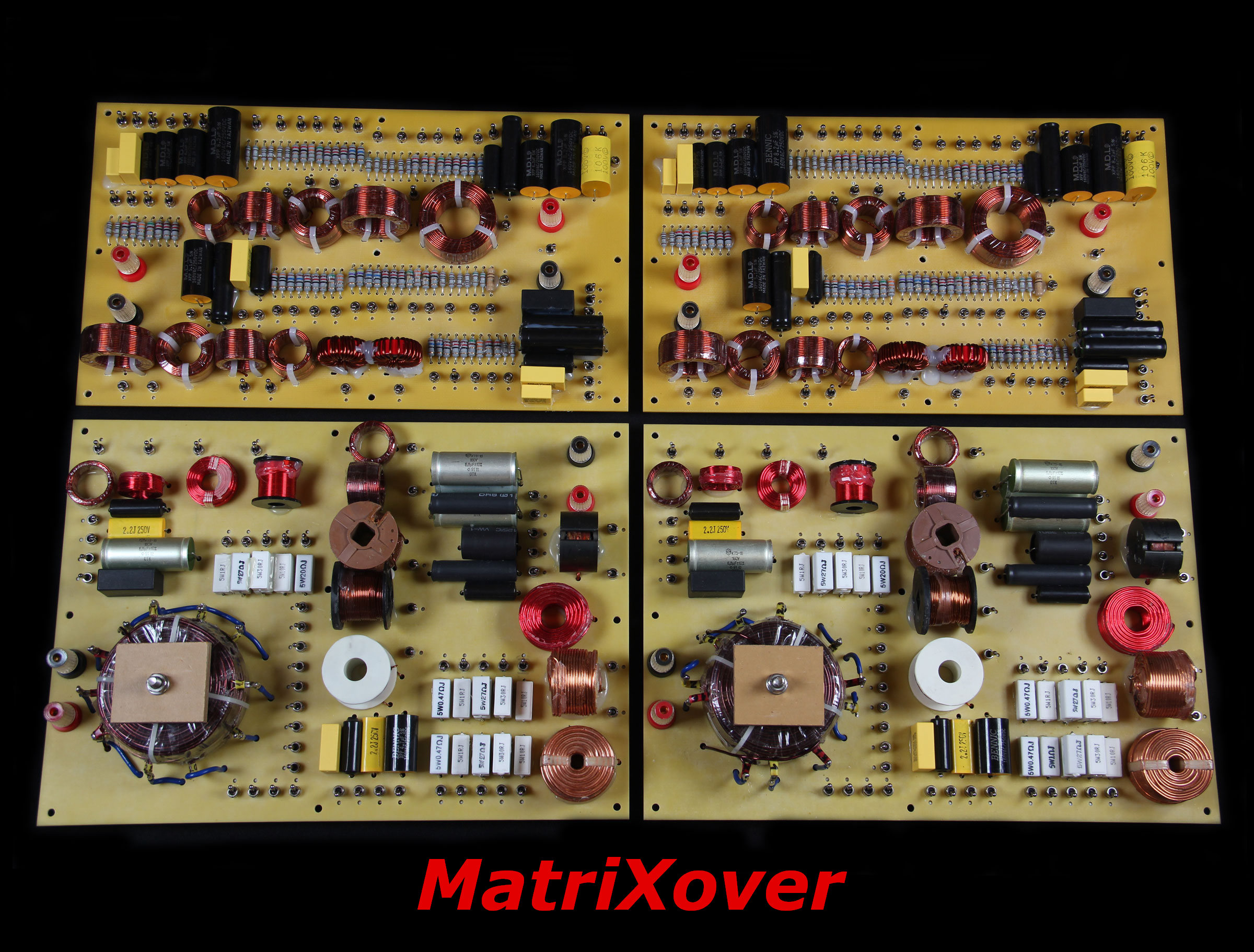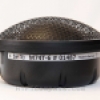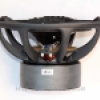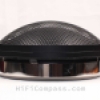HiFiCompass
MatriXover-II - universal matrix two-way crossover
The well-known expression "Laziness is the engine of progress" has once again proved its worth in the loudspeaker designing.
The design of loudspeakers always goes through the excruciating stage of crossover prototyping stage, during which the final fitting of the values of every component of the crossover is carried out - a process that takes many days. And if at the beginning of my career as a designer it was a pleasure and I enthusiastically performed prototyping exclusively with the help of soldering, expecting new quality revelations and "magic sound" from another project, then gradually the process became routine, less interesting, time-consuming, and Laziness inclined me to use a hybrid technology, when some components were connected by soldering, and the other by alligator clips, and then forced me to refuse soldering, going to connections only with alligator clips.
Yes, "crocodiles" allow you to save a lot of time and raise the threshold of internal resistance to numerous iterations on the way to the optimal crossover circuit, as the switching process is significantly simplified and accelerated. At the same time, the time between listening sessions when replacing one component by another is significantly reduced, which has a favorable effect on the reliability of the subjective evaluation of the changes made due to the short-termness of the auditory memory.
But, taming dozens of crocodiles, I constantly remembered the words from my favorite college-era desk book "The Art of Circuit Engineering" by Paul Horowitz and Winfield Hill, where they aptly noted that "the crocodile clip is known mainly because it is inconvenient to use" - those are golden words! Unstable contact and unreliable clamping often led to channel imbalance or tonal imbalance, which, in turn, took time, sometimes quite a lot of time, to diagnose and correct the problem. I am one hundred percent sure that every loudspeaker designer recalls his experience when reading these words, and will agree with me. On top of that, weaving huge webs of components and jumpers on the floor, creating a sense of permanent mess in the room, takes time, effort and little by Little Laziness begins to remind himself and resist such a technological process.
Over time, a dream arose in my head to make something versatile, allowing with minimal effort, time and with acceptable quality to ensure the construction of almost any crossover circuit and, just as importantly, the quick tuning of any of its components. Over the course of a year, gradually, in a background thought process, a design for a universal matrix dual-band crossover capable of meeting all of the above requirements and making the cherished dream a reality was born.
The design turned out to be, in principle, simple in its essence, but the laboriousness of its implementation prompted Little Laziness to resist the grueling assembly process ahead, but... Big Laziness was even more resistant to working the old way. In the end, Big Laziness defeated Little Laziness and allowed a big step in the loudspeaker designing!
So, after a couple of months, the loudspeaker designer's dream came true - the matrix two-way crossover MatriXover-II was born! By this moment I have already managed to test it in practice and I must say that I am incredibly glad that such a device has appeared in my technical arsenal. There are simply not enough words to express my emotions, this is really what I have been dreaming of for so long! The sensations are comparable to those that you experience when you walked all your life, and then you get your first car ...
A little about the design
The universal matrix two-way crossover topology was the embodiment of all my experience in designing loudspeakers, and satisfies, in my opinion, about 90-95% of all practical two-way loudspeakers. The exceptions are constructions with very "crooked" speaker drivers. The topology allows the implementation of 1st, 2nd and 3rd electrical order HPF and LPF.
Each component can be added to the circuit by an individual toggle switch with a low contact resistance of 3-5 mOhm or less. For reference, the measured transient contact resistance of a typical "crocodile" (nickel-plated steel) is 20-30 mOhm. The total number of tumblers is small, only 250 pieces![]() .
.
Each component of a conventional crossover is implemented in MatriXover-II by a chain of 4-6 switched parallel or serial components, whose values (weights) are chosen according to the weight of the binary code bits. As a result, a chain of four components can give 16 nominal values, of five - 32, and of six - as many as 64. This is more than enough to cover the full range of required values for each crossover component.
Low frequency (LF) and High frequency (HF) sections are assembled on separate boards made of 3mm fiberglass. All capacitors are film, mostly polypropylene. The inductance coils are air, except for a few high-current coils with a core rated of 0.01 mH, 0.025 mH and 0.05 mH. Resistors in the LF section are wire-wound but in the HF section they are exclusively metal-film.
The LF section allows input to output reversal. At its heart is an air inductor coil with twelve taps, wound with 14 awg copper wire.
The HF section provides a quick polarity reversal of the connected tweeter.
MatriXover-II at work!
CONTACTS
- Ukraine
- (+380) 95 904 7827
- hificompass@gmail.com
LAST NEWS
-
17 Oct 2024
-
06 Sep 2024
-
20 Jun 2024
-
02 May 2024





















